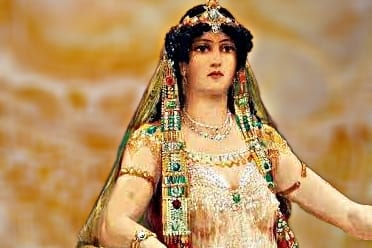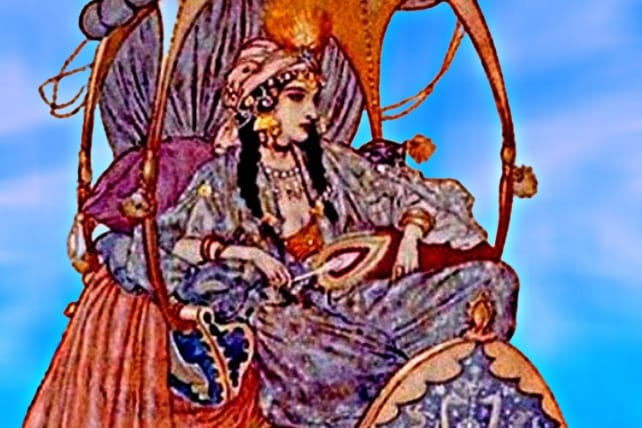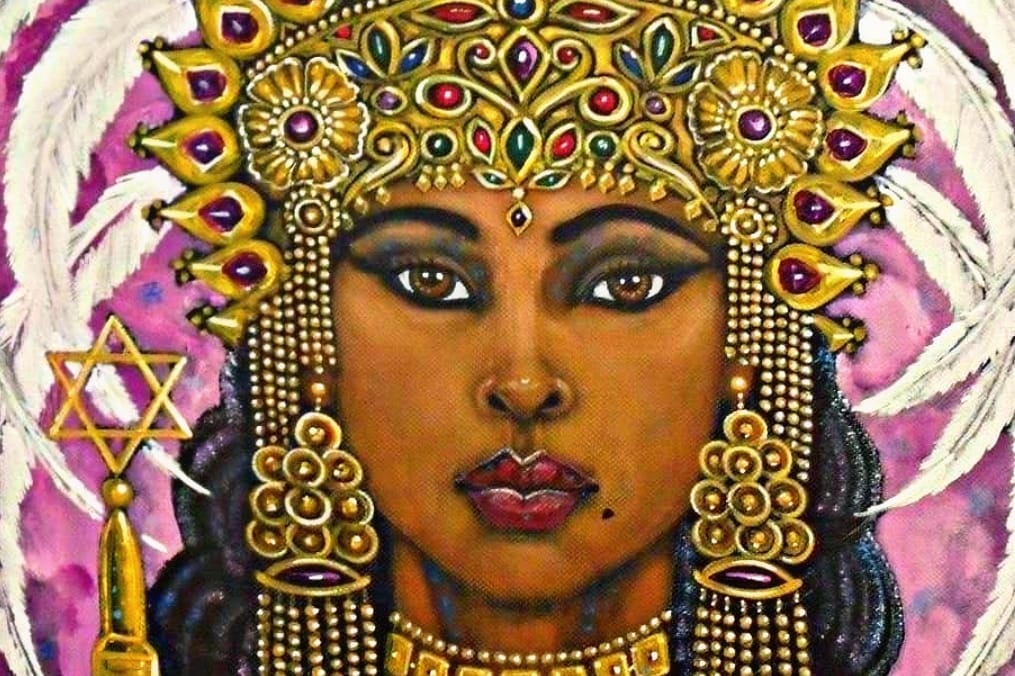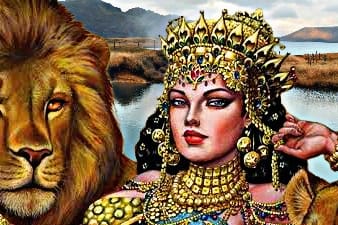The Queen of Sheba is one of the most enduring and fascinating figures in history, mythology, and religious texts. Her story is steeped in mystery, cultural significance, and legend, and she has captivated the imaginations of historians, theologians, and storytellers for centuries. Known for her wisdom, wealth, and regal status, the Queen of Sheba has been immortalized in religious scriptures, historical chronicles, and literature. Her legacy continues to inspire art, literature, and culture across the world.
In this comprehensive article, we will explore the Queen of Sheba’s historical background, her interactions with King Solomon, and the various cultural representations of this enigmatic ruler. We will also delve into the significance of her story in Christianity, Islam, and Judaism, while examining her lasting impact on the modern world.
The Queen of Sheba: An Introduction
The Queen of Sheba, often referred to simply as “the Queen,” is a central figure in various religious and historical traditions, especially in the Abrahamic faiths of Judaism, Christianity, and Islam. According to the Bible, the Quran, and other ancient texts, Sheba was a powerful and wealthy queen who traveled to meet King Solomon, the famed ruler of Israel, to test his wisdom with difficult questions. The interaction between the two monarchs became one of the most celebrated stories of the ancient world.
Although the historical details surrounding the Queen of Sheba remain shrouded in mystery, her character has been depicted as a symbol of wisdom, wealth, and strength. While many aspects of her life remain speculative, the story of her visit to King Solomon has become one of the most enduring legends of ancient history.
The Origins of Sheba: Historical and Geographical Context

The Kingdom of Sheba: Where Was Sheba?
The exact location of the Kingdom of Sheba is a subject of debate among historians and archaeologists. While many traditions associate Sheba with modern-day Ethiopia or Yemen, the true geographic location remains a mystery. Various ancient texts and traditions have placed the Kingdom of Sheba in the Arabian Peninsula, specifically in southern Arabia, where the Kingdom of Saba was located. Others argue that Sheba was situated in the Horn of Africa, with Ethiopia being the most likely contender.
- Ethiopian Tradition: The Ethiopian narrative holds that the Queen of Sheba was the founder of the Solomonic dynasty, with her son, Menelik I, believed to be the first emperor of Ethiopia. This tradition is recorded in the ancient Ethiopian text known as the Kebra Nagast (“The Glory of Kings”), which tells the story of the Queen’s journey to Jerusalem and her subsequent meeting with King Solomon.
- Arabian Tradition: In the Arabian Peninsula, Sheba is often associated with the ancient Kingdom of Saba (also spelled Sheba), located in modern-day Yemen. This region was historically known for its wealth, particularly due to its control over trade routes that brought frankincense, myrrh, and spices from the East to the Mediterranean world.
Scholars continue to debate the location of Sheba, and it is possible that the Kingdom of Sheba had influence over both the Horn of Africa and the Arabian Peninsula. Archaeological evidence from Yemen suggests the existence of a powerful kingdom in the region during the first millennium BCE, and inscriptions from the ancient Sabaean people mention the Queen of Sheba.
The Queen of Sheba in Religious Texts

The Queen of Sheba in the Hebrew Bible
The Queen of Sheba’s most famous encounter is described in the Hebrew Bible, specifically in the First Book of Kings (1 Kings 10:1-13) and the Second Book of Chronicles (2 Chronicles 9:1-12). According to these biblical accounts, the Queen of Sheba heard of King Solomon’s wisdom and decided to visit him to test his knowledge. She arrived in Jerusalem with a grand entourage, bringing lavish gifts of gold, spices, and precious stones, which were symbolic of her wealth and power.
The biblical narrative describes how the Queen posed challenging questions to Solomon, and in return, Solomon answered all her inquiries with great wisdom. Impressed by his vast knowledge and the prosperity of his kingdom, the Queen praised Solomon and acknowledged the greatness of God. She then gave Solomon additional gifts, and the two rulers parted on friendly terms, cementing a diplomatic and cultural exchange between their kingdoms.
The story of the Queen of Sheba and King Solomon has been interpreted as a symbol of the universal appeal of wisdom and the interconnectedness of ancient civilizations. It also highlights the Queen’s political acumen, as she sought to establish ties with a powerful neighbor for mutual benefit.
The Queen of Sheba in the Quran
In Islam, the Queen of Sheba is known as Bilqis, and her story is mentioned in the Quran in Surah An-Naml (27:38-40). The Quran presents Bilqis as a wise and powerful ruler of a kingdom who encounters Prophet Solomon, or Sulaiman, when he is sent by God to guide her to the true faith.
According to the Quranic narrative, when Solomon learned of the Queen’s wealth and sovereignty, he summoned her to come to him. Bilqis, initially skeptical of Solomon’s wisdom, tested him by asking him to perform a miracle. Solomon responded by using his divine powers to summon a throne identical to hers, demonstrating his wisdom and the power of God. This display of divine authority convinced the Queen of Solomon’s greatness and she ultimately accepted his invitation to embrace monotheism and the worship of God.
The Quran’s account emphasizes themes of humility, submission to divine will, and the transformative power of faith. Bilqis’s story is a tale of wisdom, leadership, and spiritual enlightenment, and she is revered as a righteous and wise queen in Islamic tradition.
The Queen of Sheba in Other Texts
In addition to the Hebrew Bible and the Quran, the Queen of Sheba is mentioned in various other texts and traditions, including the Kebra Nagast (The Glory of Kings), an ancient Ethiopian manuscript that recounts the story of the Queen’s journey to Solomon’s court. The Kebra Nagast is of particular significance in Ethiopian Christianity, as it tells how the Queen of Sheba conceived a son with King Solomon, whom they named Menelik I. According to the tradition, Menelik returned to Jerusalem to meet his father as a young man, and upon his return to Ethiopia, he brought with him the Ark of the Covenant, which is said to reside in the Ethiopian town of Axum to this day.
In medieval and Renaissance literature, the Queen of Sheba’s story continued to captivate audiences, with her depicted as a symbol of exotic wealth and wisdom. The theme of her journey to Solomon’s court also became a popular motif in art, literature, and drama.
The Queen of Sheba in Culture and Art

Throughout history, the Queen of Sheba has been an enduring figure in literature, music, art, and culture. Artists and writers have been inspired by her wisdom, beauty, and mysterious origins. From the visual arts to literature and folklore, the Queen of Sheba has been portrayed as a symbol of regal power, spiritual wisdom, and exotic beauty.
Literature and Poetry
In European literature, the Queen of Sheba was a popular subject in the Middle Ages and Renaissance. Her story was retold in countless poems, plays, and romances, with her character often being depicted as both a symbol of spiritual wisdom and an object of desire. Writers like Geoffrey Chaucer and John Milton made references to the Queen of Sheba in their works, and her journey to meet Solomon was often seen as a representation of the quest for divine knowledge.
In Ethiopian literature, the Queen of Sheba’s legacy is particularly important. The Kebra Nagast (The Glory of Kings), written in the 14th century, is one of the most famous and significant works of Ethiopian literature. It combines history, legend, and theology, and it tells the story of how the Queen of Sheba’s union with King Solomon gave birth to the Solomonic dynasty in Ethiopia.
Visual Arts
In the visual arts, the Queen of Sheba has been a popular subject from the ancient world to the present day. Renaissance artists, in particular, were drawn to her dramatic encounter with King Solomon. She has been depicted in paintings by renowned artists such as Peter Paul Rubens, Edward Burne-Jones, and Marc Chagall, often portrayed as a regal, dignified figure.
The Adoration of the Magi by Rubens features a prominent depiction of the Queen of Sheba, and she has also been portrayed in architectural reliefs and sculptures. In Ethiopia, the Queen of Sheba’s image is often portrayed in churches and monasteries, where she is revered as an ancestor of the Ethiopian royal family.
The Queen of Sheba’s Legacy: Symbolism and Influence
The Queen of Sheba’s legacy has endured for millennia and continues to influence both historical and contemporary culture. Her story is a powerful narrative of wisdom, leadership, and the quest for truth. Whether viewed as a symbol of enlightenment or as a political figure engaged in diplomatic relations, the Queen of Sheba embodies the qualities of intelligence, power, and grace.
A Symbol of Wisdom and Power
In many cultures, the Queen of Sheba has come to symbolize the ideal of wise leadership. She is often depicted as a ruler who sought knowledge and wisdom, and her journey to King Solomon’s court represents the pursuit of intellectual and spiritual truth. Her willingness to engage with Solomon in intellectual discourse reflects her deep commitment to understanding the world.
Influence on Modern Culture
Today, the Queen of Sheba continues to inspire works of art, literature, and popular culture. From books and films to stage productions and documentaries, her legacy remains relevant in modern times. She is frequently portrayed in contemporary art and literature as a feminist icon, representing the power of women in leadership and governance.
Her connection to Ethiopia also makes her a key figure in African heritage and identity. The Solomonic dynasty, which traces its lineage back to the Queen, remains an important symbol of Ethiopian history and culture.
Conclusion: The Enduring Mystery of the Queen of Sheba
The Queen of Sheba remains one of the most captivating and enigmatic figures in history and mythology. Her story transcends cultural boundaries, resonating in the sacred texts of Judaism, Christianity, and Islam, as well as in the rich traditions of Ethiopia and the Arabian Peninsula. Whether as a wise ruler, a symbol of spiritual enlightenment, or a diplomatic figure, the Queen of Sheba’s legacy continues to inspire awe and reverence.
Her visit to King Solomon, a meeting that blended wisdom, wealth, and cultural exchange, remains one of the most celebrated and enduring stories of the ancient world. And while the true historical details of her life may remain elusive, the Queen of Sheba’s influence on art, literature, religion, and culture is undeniable. The legend of the Queen of Sheba, a ruler of both wisdom and strength, will continue to inspire generations to come.

